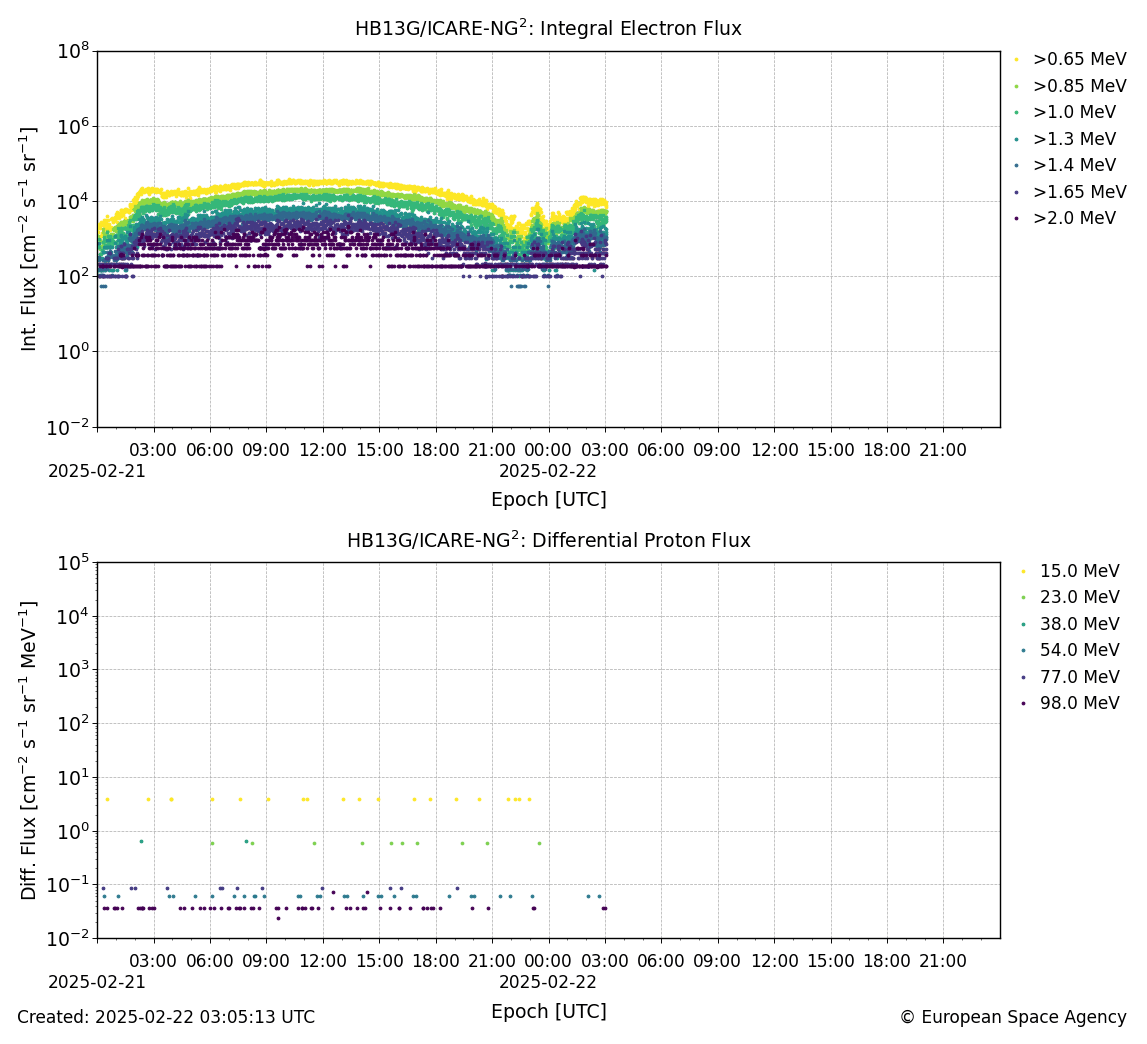ICARE-NG²
ICARE-NG²
ICARE-NG² data is provided as part of the SWE Service Network’s General Data Services.
It will become accessible via the SWE Data Browser or through HAPI.
Note: Please be advised that data delivery from ICARE-NG² might not be fully stable yet and outages as well as delays might occur.
The Instrument
ICARE-NG² (Influence sur les composants avancés des radiations de l'environnement) is the third generation of the CNES-ONERA-EREMS radiation monitor. It benefits from more than 20 years of heritage.
Three sensors are implemented on the instrument, two of them are composed of two silicon detectors with coincidence and anticoincidence logic and one of them is made of a single silicon detector. A pulse height analyzer allows to build histogram of deposited energy in each silicon detector.
The radiation monitor has been calibrated under radiation sources at ONERA and by numerical means. The electron and proton response functions of the three sensors have been derived from GEANT-4 simulation accounting for ground calibration results.
ICARE-NG² flux datasets
To derive flux out of count rates a Bow-Tie analysis is applied. Considering the response functions of the sensors and a range of expected flux shapes, the Bow-Tie analysis allows to derive a scaling factor and an energy value that minimizes the uncertainties in all magnetic activity conditions.
The details of the ICARE-NG² Level 1 (L1) flux are provided in the following section. Note that the datasets include also timestamps, ephemeris data (in the ECI coordinate system) and magnetic coordinates (L, L*, MLT etc). The magnetic coordinates were derived using the IRBEM library assuming the IGRF model for the internal, and the quiet Olson-Pfitzer 1977 model for the external magnetic field components.
HotBird-13F and 13G / ICARE-NG² L1 datasets
HotBird-13F and HotBird-13G are geostationary telecommunication spacecraft from Eutelsat were launched respectively on 15-Oct-2022 and 03-Nov-2022. On-station they are both located at 13° east.
The current L1 data release of ICARE-NG² datasets consists of proton omnidirectional differential fluxes, FPDO [MeV-1 cm-2 s-1 sr-1] and electron omnidirectional integral flux, FEIO [cm-2 s-1 sr-1].
The energy bins and the respective energies [MeV] per particle specie and spectra type of the provided datasets are given in Table 1.
| Energy Bin | FPDO_Energy [MeV] | FEIO_Energy [MeV] |
|---|---|---|
| 1 | 15.0 | 0.65 |
| 2 | 23.0 | 0.85 |
| 3 | 38.0 | 1.00 |
| 4 | 54.0 | 1.30 |
| 5 | 77.0 | 1.40 |
| 6 | 98.0 | 1.65 |
| 7 | - | 2.00 |
For more details on the HotBird-13F and HotBird-13G/ICARE-NG² datasets, please consult the Data Description Document
Figure 1. Illustration of ESA’s Distributed Space Weather Sensor System concept planned to be realised through hosted payload missions as well as dedicated small satellite missions.
Figure 2. The ICARE-NG² flight model for HotBird-13f with the sensors on the left of the instrument and the electronic box on the the right.

